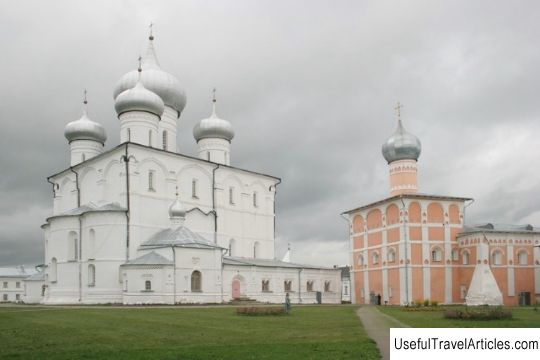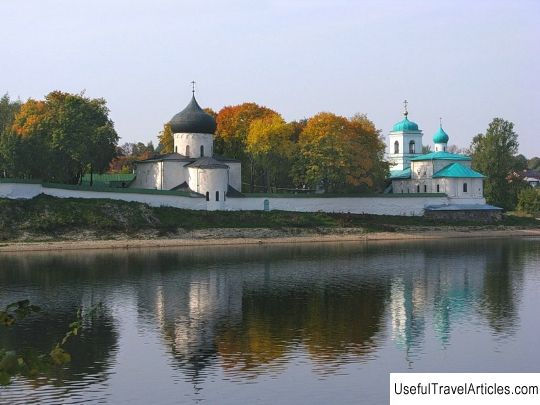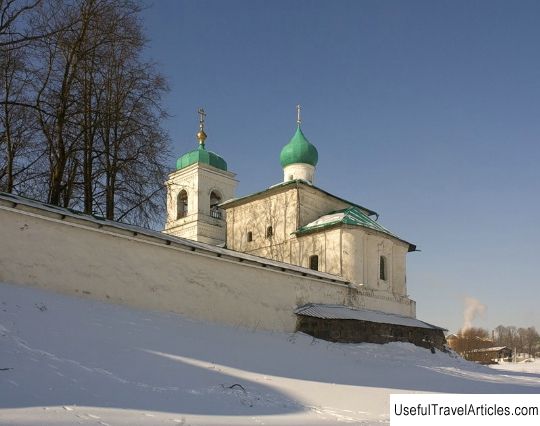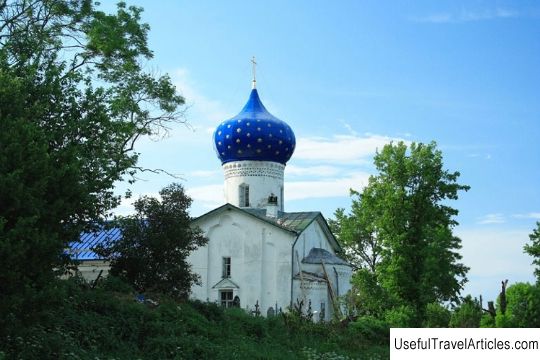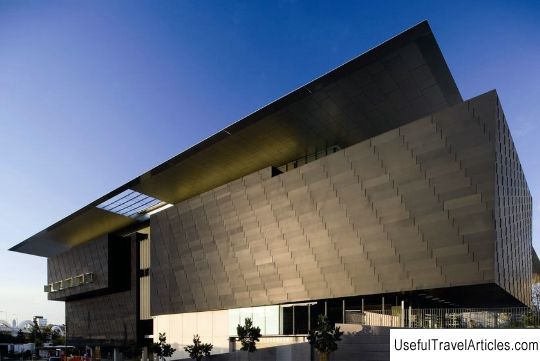Spaso-Preobrazhensky Cathedral of the Mirozhsky Monastery description and photos - Russia - North-West: Pskov
Rating: 8,1/10 (304 votes) 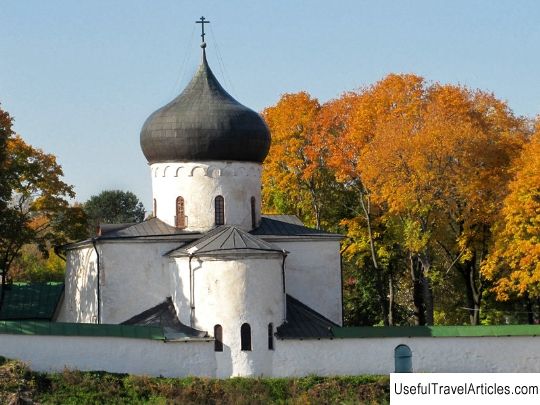
Transfiguration Cathedral of the Mirozh Monastery description and photos - Russia - North-West: Pskov. Detailed information about the attraction. Description, photos and a map showing the nearest significant objects. Photo and descriptionThe Cathedral of the Transfiguration of the Savior is an integral part of the Pskov Spaso-Preobrazhensky Mirozhsky monastery. It was built from plinth (wide, flat fired brick) and stone until 1156. The temple - cross-domed, has a rare type of architecture for ancient Russian art. The main volume of the building is made in the form of an equal-pointed cross (its eastern line is semicircular, because it ends with an altar apse), to which low compartments are attached at the corners: 2 rectangular - from the west side and 2 small apses - from the east. From this follows the conclusion: initially the church had a pronounced cross shape on the outside. In the interior decoration, the main cruciform space was connected to the corner only by small aisles. Although already during the initial construction, superstructures were added over the western corners. After a while, the temple was rebuilt, and its form lost its original design. The cathedral was painted with frescoes from top to bottom in the 1130s and 1140s by unknown Greek masters. Most likely, the mural painting program was proposed by Archbishop Nifont from Novgorod (the creator of the monastery). The frescoes of the Transfiguration Cathedral are unique. Their uniqueness lies in a well-thought-out iconographic system, in a high artistic quality, and, in addition, almost the entire complex of paintings has been preserved. In terms of style, they have no chronological analogues in our country and resemble Byzantine mosaics in some Sicilian temples of the 12th century. The theme of the combination of divine and human nature in God the Son is central to the composition of the temple. All the leading moments of the church decoration are subordinated to the disclosure of this theme. The peak in the composition are the Deesis in the altar conch and the huge domed Ascension. The content of the vaults and lunettes of the cathedral determines the theme of the atoning sacrifice. Among this mass of frescoes, the "Lamentation of Christ" on the north wall attracts attention. The third register from the top reflects the miracles of Christ. Two registers of paintings in the central volume at the bottom are dedicated to the holy prophets, soldiers, elders, monks, and so on. Greek inscriptions are rare, so most of the images have not been identified. But the warriors Bacchus and Sergius were identified, the healers Cyrus, Panteleimon and John, the rarely portrayed martyrs Eudoxius and Romulus, the Persian saints Aifal, Akepsim and Joseph, Saints Euphrosynus and Nikon and others. In the 17th century, the frescoes of the cathedral were whitewashed (most likely due to a fire in the 15th or 16th centuries), and this happily saved them. At the end of the 19th century, in 1893, through the efforts and labor of the archaeologist and art historian V.V. Suslov and his students, they were opened from under the plaster. Some parts of the frescoes were lost, some colorful layers were worn out, which in no way suited the monastery clergy. For this reason, by a decree of the Synod, Suslov was removed from restoration work, and Vladimir icon painters were hired to "restore" the frescoes under the leadership of N.M. Safonov. In 1900-1901, the masters washed the ancient paintings, and then rewrote them "in the ancient style", keeping only the old iconography of the subject. In 1927-1929, a new disclosure of frescoes was started, which continues to the present day: about half of the area of unique frescoes is under the artisan renovation of 1901. Now the Cathedral of the Transfiguration of the Savior is a museum, services are not conducted in it, only on the patronal holiday - the Transfiguration of the Lord, in agreement with the department of culture, the service is conducted by the monastery brethren.         We also recommend reading Monastery of Santa Clara-a-Velha (Mosteiro Santa Clara-a-Velha) description and photos - Portugal: Coimbra Topic: Spaso-Preobrazhensky Cathedral of the Mirozhsky Monastery description and photos - Russia - North-West: Pskov. |
